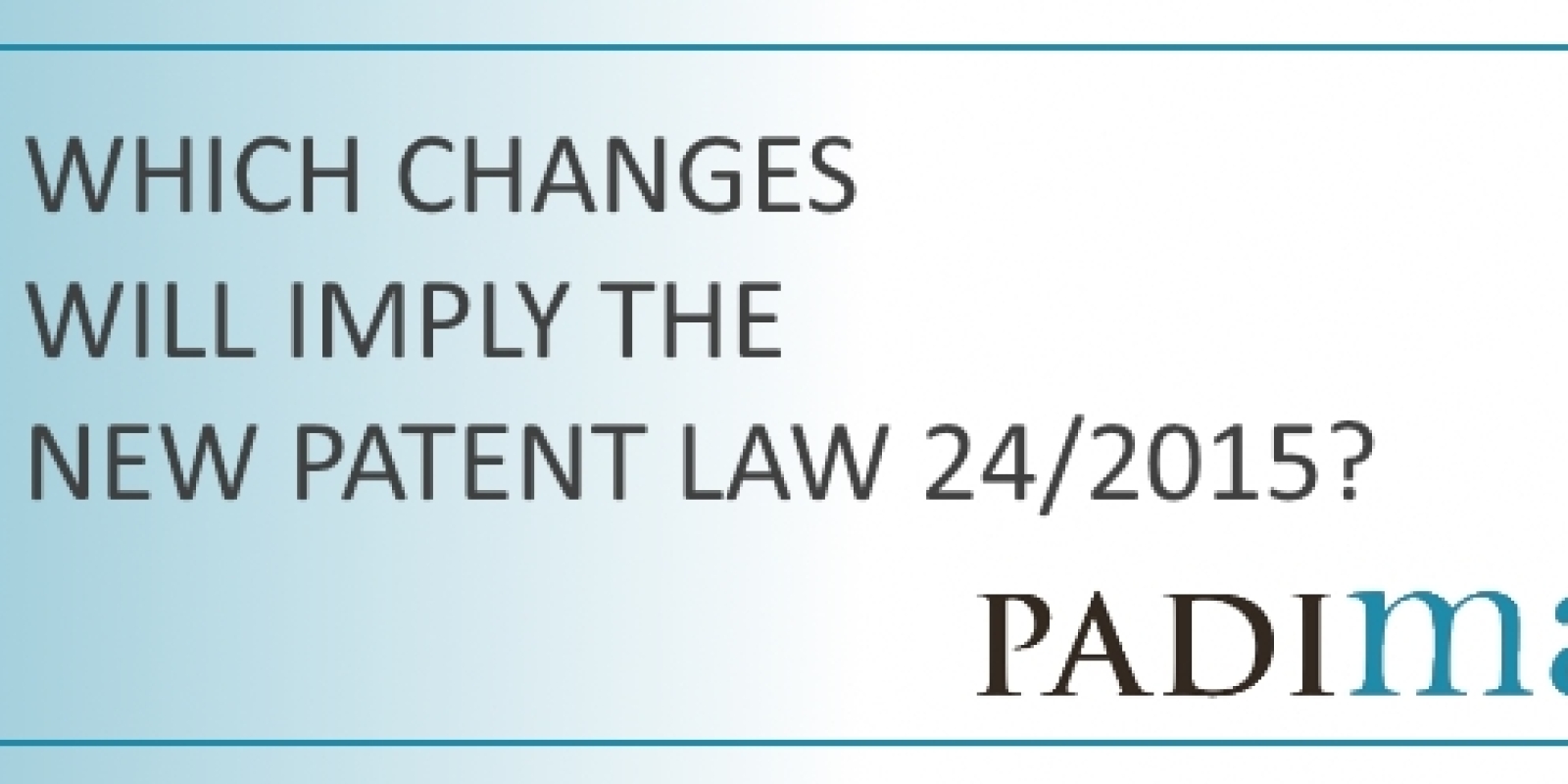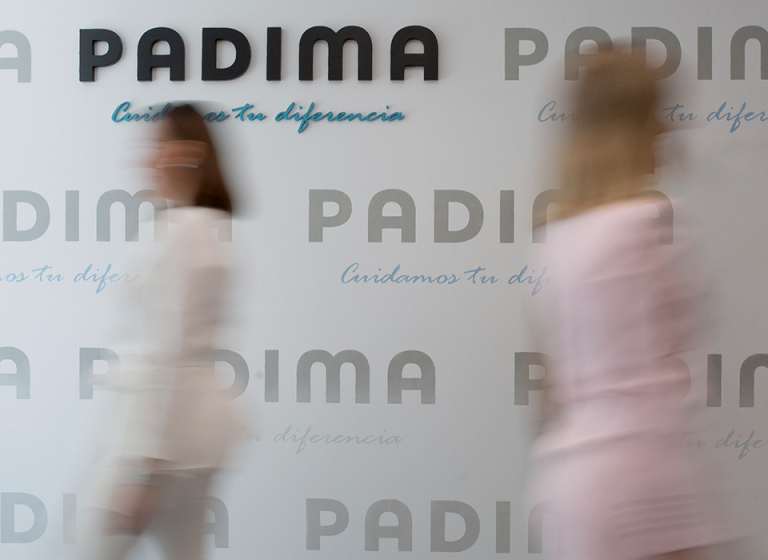[vc_row][vc_column][vc_column_text]
On 25 July 2015, the Spanish Official Gazette published the new Patent Law 24/2015 which will amend the current Law 11/1986 in force in our country. It will come into force next 1 April 2017.
Within this scenario, we would like to tell you what the Patent Law in force implies and what has originated it, which changes the new Patent Law will bring and what we can expect to get from the new Patent Law.
[/vc_column_text][vc_gap height=»20″][vc_heading title=»What does the Patent Law 11/1986 imply?» type=»h3″ style=»style3″ text_transform=»Default» align=»left» margin_bottom=»20″][vc_gap height=»20″][vc_column_text]
The Spanish Patent System recognizes two different figures to protect an invention according to the degree of inventive step: the patent and the utility model. Both figures protect the technical features of an invention that offers a solution or improvement not disclosed in the State of the Art.
As regards to patents, they protect products and processes; their term of protection lasts 20 years from the filing date and they require worldwide novelty, inventive step and industrial application.
It may take the Spanish Patent and Trademark Office (OEPM) up to two years and a half to grant a patent. However, there is now an accelerated program in which the State of the Art Search Report may be obtained within the priority period, by paying the examination fees with the application fee.
The Patent Law 11/1986 of 20 March specifies two granting procedures: the general granting procedure, in which a patent application is always granted, even without a State of the Art Search Report; and the previous exam procedure, with which the granting is only obtained when the patent meets the patentability requirements.
On the other hand, utility models protect devices or specific solutions of an invention, their term of protection lasts 10 years from the filing date, and their patentability requirements are: national novelty, a lesser inventive step than patents and the industrial application.
Utility models are granted through a formal examination by the OEPM, and if no opposition is lodged, this process shall last six or eight months.
[/vc_column_text][vc_gap height=»20″][vc_heading title=»What situation has the Patent Law 11/1986 originated?» type=»h3″ style=»style3″ text_transform=»Default» align=»left» margin_bottom=»20″][vc_gap height=»20″][vc_column_text]
In view of the relevant Spanish Patent System features, the General Granting Procedure is chosen by around 95% of inventions patented. This means that if the formal examination is overcome, the patent will be granted even if it is not new or has no inventive step.
Against this background, in our opinion, the current patent law provides a poor system, since the legal strength of the patent documents and their defence is uncertain, causing disaffection in the users. On the other side, the utility models defence is also unsafe, for which this figure is mainly used just as a marketing tool by the user.
All of the above is causing a work overload in the Courts, saturated with patent and utility model cases that in many cases do not meet the patentability requirements.
[/vc_column_text][vc_gap height=»20″][vc_heading title=»Which changes will imply the new Patent Law 24/2015? » type=»h3″ style=»style3″ text_transform=»Default» align=»left» margin_bottom=»20″][vc_gap height=»20″][vc_column_text]
As from next year, the new Patent Law 24/2015 will bring a unique patent granting procedure: the mandatory previous exam in which the patent will be examined, leading to its granting or rejection. Besides, with the new Law a 6-months opposition period will be opened after the patent granting publication.
[/vc_column_text][vc_gap height=»20″][vc_column_text]
Regarding utility models, absolute novelty of the invention shall be needed. The object or product to be protected extends its scope of protection, reaching any product or composition, including chemical products, except that falling upon the biological material and the pharmaceutical substances or compositions. Moreover, the holder shall be obliged to obtain a State of the Art Search Report in order to bring legal actions based on a utility model.
[/vc_column_text][vc_gap height=»20″][vc_gap height=»20″][vc_heading title=»Other benefits of both inventive figures in the new Spanish Patent Law will be:» type=»h6″ style=»style3″ text_transform=»Default» align=»left» margin_bottom=»20″][vc_gap height=»20″][vc_column_text]
- The holder shall limit or revoke a patent or utility model during its legal life or even during a nullity action.
- The equivalents doctrine is explicitly mentioned in order to determine the scope of protection.
- The compulsory licence for lack or insufficiency of exploitation is included. It could be filed when the Patent or Utility Model has been ceased for more than one year, simplifying the procedure.
- Official fees reductions for small and medium entities: 50% for entrepreneurs in the application fee, request of the State of the Art Search Report, substantive examination and in the third, fourth and fifth annuities.
- The provider is obliged to inform the employer of the invention developed, and the employer shall respond and assume the ownership of the patent application.
- Obligation to report the inventions developed by the research staff of Public Universities and Public Research Entities.
[/vc_column_text][vc_gap height=»20″][vc_heading title=»What can we expect from the Patent Law 24/2015?» type=»h3″ style=»style3″ text_transform=»Default» align=»left» margin_bottom=»20″][vc_gap height=»20″][vc_column_text]
The new Patent Law intends to obtain a more solid patent system, by equating the most innovative patent systems, such as the European one, and promoting solid title for the applicants, so as to avoid unnecessary demands and disputes and guaranteeing a greater legal certainty, both to holders and third parties.
Thus, we trust that the New Patent law L24/2015 will improve the Spanish Patent System prestige.
[/vc_column_text][vc_gap height=»20″][/vc_column][/vc_row][vc_row][vc_column][vc_separator align=»left» style=»normal» type=»large» margin_top=»5″ margin_bottom=»25″][/vc_column][/vc_row][vc_row][vc_column][vc_column_text]
[/vc_column_text][/vc_column][/vc_row][vc_row][vc_column][vc_heading title=»Author » type=»h4″ style=»style3″ text_transform=»Default» align=»left» margin_bottom=»20″][/vc_column][/vc_row][vc_row][vc_column][vc_person style=»style2″ social_links=»linkedin» image=»7035″ name=»Isabel IBARRA» role=» Innovation Depto.» linkedin=»https://www.linkedin.com/in/isabel-ibarra-garcia-03136010b»][/vc_column][/vc_row][vc_row][vc_column][vc_column_text]
A graduate in Chemical Engineering. PQ. European Patent Attorney. Diploma of Advanced Studies (DEA), she is also a qualified university specialist in patents and technology transfer from the University of Alicante. She is responsible for the Agency Area in the Innovation Department, providing a consultancy service, performing searches for prior rights and drafting viability/patentability reports. She is an expert drafter of patent and utility models and coordinates the Technology Surveillance Service. Magister Lucentinus in Intellectual Property ( Alicante) Professor.
i.ibarra@padima.es[/vc_column_text][/vc_column][/vc_row][vc_row][vc_column][vc_separator align=»left» style=»normal» type=»large» margin_top=»5″ margin_bottom=»25″][/vc_column][/vc_row]





